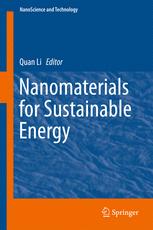

Most ebook files are in PDF format, so you can easily read them using various software such as Foxit Reader or directly on the Google Chrome browser.
Some ebook files are released by publishers in other formats such as .awz, .mobi, .epub, .fb2, etc. You may need to install specific software to read these formats on mobile/PC, such as Calibre.
Please read the tutorial at this link: https://ebookbell.com/faq
We offer FREE conversion to the popular formats you request; however, this may take some time. Therefore, right after payment, please email us, and we will try to provide the service as quickly as possible.
For some exceptional file formats or broken links (if any), please refrain from opening any disputes. Instead, email us first, and we will try to assist within a maximum of 6 hours.
EbookBell Team

0.0
0 reviewsThis book presents the unique mechanical, electrical, and optical properties of nanomaterials, which play an important role in the recent advances of energy-related applications. Different nanomaterials have been employed in energy saving, generation, harvest, conversion, storage, and transport processes very effectively and efficiently. Recent progress in the preparation, characterization and usage of 1D, 2D nanomaterials and hybrid architectures for energy-related applications and relevant technologies and devices, such as solar cells, thermoelectronics, piezoelectronics, solar water splitting, hydrogen production/storage, fuel cells, batteries, and supercapacitors is covered. Moreover, the book also highlights novel approaches in nanomaterials design and synthesis and evaluating materials sustainability issues. Contributions from active and leading experts regarding important aspects like the synthesis, assembly, and properties of nanomaterials for energy-related applications are compiled into a reference book. As evident from the diverse topics, the book will be very valuable to researchers working in the intersection of physics, chemistry, biology, materials science and engineering. It may set the standard and stimulates future developments in this rapidly emerging fertile frontier of nanomaterials for energy.